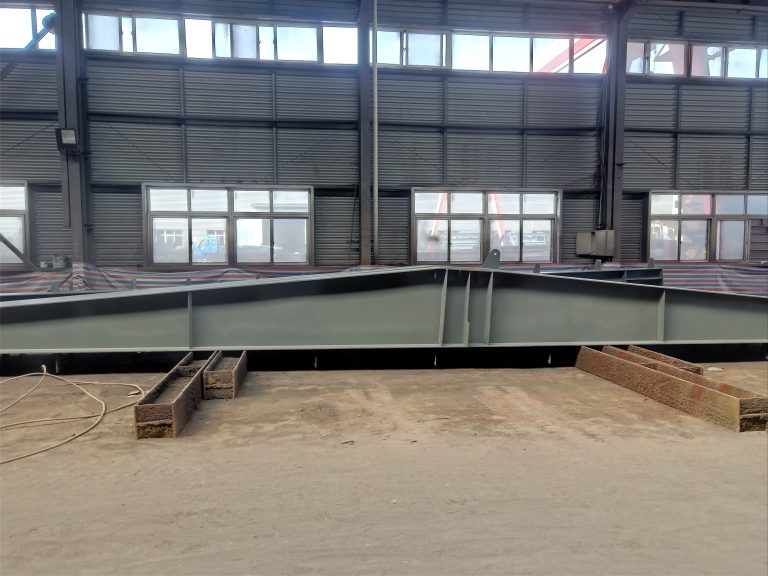Table of Contents
Benefits of Lightweight Steel in Automobile Manufacturing
In recent years, there has been a significant breakthrough in the use of lightweight steel in automobile manufacturing. This innovation has revolutionized the industry by providing a more efficient and sustainable alternative to traditional materials. Lightweight steel offers a wide range of benefits that make it an attractive option for automakers looking to improve the performance and fuel efficiency of their vehicles.
One of the key advantages of lightweight steel is its strength-to-weight ratio. By using advanced manufacturing techniques, steel can be made thinner and lighter without sacrificing its structural integrity. This allows automakers to reduce the overall weight of their vehicles, which in turn improves fuel efficiency and reduces emissions. In fact, studies have shown that using lightweight steel can result in a 5-7% increase in fuel economy compared to traditional materials.
Another benefit of lightweight steel is its durability and crashworthiness. Steel is known for its high tensile strength, which makes it an excellent choice for protecting passengers in the event of a collision. By using lightweight steel in key structural components, automakers can improve the safety of their vehicles without adding unnecessary weight. This not only enhances the overall performance of the vehicle but also reduces the environmental impact of manufacturing and disposal.
In addition to its strength and durability, lightweight steel is also highly recyclable. Steel is one of the most recycled materials in the world, with nearly 90% of all steel products being recycled at the end of their life cycle. This makes it a sustainable choice for automakers looking to reduce their carbon footprint and minimize waste. By using lightweight steel in their vehicles, automakers can contribute to a more circular economy and help protect the environment for future generations.
Furthermore, lightweight steel offers cost savings for automakers. While the initial investment in advanced manufacturing techniques may be higher, the long-term benefits of using lightweight steel far outweigh the costs. By reducing the weight of their vehicles, automakers can improve fuel efficiency, reduce emissions, and enhance safety without compromising on performance. This not only benefits the environment but also helps automakers stay competitive in a rapidly changing industry.
Overall, the breakthrough of lightweight steel in automobile manufacturing has had a profound impact on the industry. By offering a more efficient, sustainable, and cost-effective alternative to traditional materials, lightweight steel has become a key driver of innovation in the automotive sector. As automakers continue to explore new ways to improve the performance and sustainability of their vehicles, lightweight steel will undoubtedly play a crucial role in shaping the future of transportation.
Future Implications of Lightweight Steel in Automotive Industry
The automotive industry is constantly evolving, with manufacturers always on the lookout for new materials and technologies to improve the performance, efficiency, and safety of their vehicles. One such breakthrough in recent years has been the development of lightweight steel, which has the potential to revolutionize automobile manufacturing.
Traditionally, steel has been the material of choice for building cars due to its strength and durability. However, steel is also heavy, which can negatively impact a vehicle’s fuel efficiency and overall performance. This is where lightweight steel comes in. By using advanced manufacturing techniques and alloy compositions, engineers have been able to create steel that is just as strong as traditional steel but significantly lighter.
The implications of this breakthrough are vast. Lightweight steel has the potential to make vehicles more fuel-efficient, reducing emissions and helping to combat climate change. It can also improve handling and performance, making cars more agile and responsive on the road. Additionally, lightweight steel can enhance safety by reducing the overall weight of the vehicle, which can lead to better crash performance.
One of the key advantages of lightweight steel is its cost-effectiveness. Unlike other lightweight materials such as carbon fiber, which can be expensive to produce and repair, lightweight steel is relatively affordable and easy to work with. This makes it an attractive option for manufacturers looking to reduce the weight of their vehicles without breaking the bank.
Another benefit of lightweight steel is its recyclability. Steel is one of the most recycled materials in the world, with a recycling rate of over 85%. This means that lightweight steel can help reduce the environmental impact of automobile manufacturing by minimizing waste and conserving resources.
In addition to its environmental and economic benefits, lightweight steel also offers design flexibility. Engineers can use lightweight steel to create innovative vehicle designs that were previously not possible with traditional steel. This opens up new possibilities for aerodynamics, aesthetics, and overall vehicle performance.
As the automotive industry continues to shift towards electric and autonomous vehicles, the demand for lightweight materials will only increase. Lightweight steel is well-positioned to meet this demand, offering a balance of strength, durability, and weight savings that is unmatched by other materials.

In conclusion, the breakthrough of lightweight steel in automobile manufacturing has the potential to transform the industry in a number of ways. From improving fuel efficiency and performance to enhancing safety and design flexibility, lightweight steel offers a range of benefits that make it an attractive option for manufacturers. As the technology continues to evolve, we can expect to see more and more vehicles on the road that are built with lightweight steel, leading to a greener, safer, and more innovative automotive industry.






